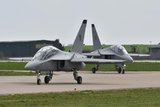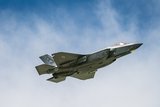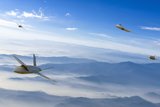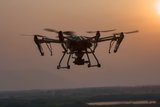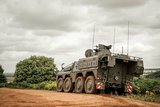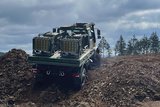GSOF Symposium Europe 2022 narrows in on SOF mission requirements (Sponsored)
The event takes place at a critical juncture for the ambitions of many European nations, including the Hungarian Defence Forces, to bring SOF funding in line with its increasingly important role in current conflicts.
“Current events in Europe are not only driving a huge reinvestment in SOF capabilities, they are providing a unique insight into how the SOF-conventional warfare dynamic is evolving before our eyes,” Stu Bradin, President & CEO, Global SOF Foundation, said. “We are seeing legacy Cold War equipment and dumb weapons being used alongside non-traditional tactics including cyber and information/disinformation operations, with things like social media being weaponized; this hybrid warfare is where conflicts are now heading, and it has huge implications for how we train, equip and deploy our forces going forward.”

The conference will put two major areas of change in the spotlight: the impact of drones on the modern battlefield, and the growth of SOF aviation; with a focus on how the role of such equipment is evolving, and how its use can shape the mission sets of the special forces that operate them.
“Drones are no longer simply ISR assets in today’s battlefield, they are ISR assets with long loiter times that can be deployed as high-precision weapons,” Bradin said. “That shift in capability has an extraordinary effect on the changing complexity of how conflicts can be fought – and is exceptionally effective for operations undertaken by small, disparate groups of people as is the case in SOF operations.
“Similarly the rise in SOF aviation is perhaps the fastest-growing mission set. It has long been deferred because it is expensive and requires the most advanced avionics, but it remains the most effective means of moving people over long distances, quickly – we’re seeing the recognition of that now.”
Host nation Hungary’s SOF are one nation that – having prioritized their capability needs based on current mission requirements - have identified manned and unmanned aviation systems as key capability gaps. This growing demand is in line with an analysis that expects spending on military-specific UAS in Europe to more than double over the next five years, and grow from around $1 billion annually to over $2.2 billion in 2026. That translates to a total spending of $7.6 billion.
“In Europe now, our data shows that there is domestic manufacture of military-specific UAS in 25 countries,” Matthew Smith, Director of Analysis at Shephard’s Defence Insight, said. “This translates to around 275 different systems being made in Europe, and these span the full range of capabilities from tiny nano-drones the size of a finger to high-end MALE and HALE systems.
“But that’s not all, we are also importing UAS from outside Europe – the US, Israel, Turkey among others. Over the past few years, European militaries have acquired hundreds of drones and there are potentially thousands more to come over the coming years.”

Other major areas of focus at GSOF 2022 will include assessing the value of Special Operations in integrated deterrence, and the importance of Special Operations-specific funding – something that many European nations are working to understand as they look to build SOF budgets into defence budgets long dominated by the demands of conventional warfare.
“One of the overwhelming consequences of the Peace Dividend following the end of the Cold War was that military forces that had been world-class lost funding momentum, and many are only just waking up to that realization today,” Bradin said. “So there’s a lot of rebuilding to do, but it has to be done in a smart way with budgets, equipment and tactics that will deliver on the modern battlefield.”
For many, this will involve the creation – for the first time – of Special Operations budgets that will allow acquisition authorities to rapidly procure SOF-peculiar equipment that is not on the radar of their conventional forces’ counterparts. Symposium speakers such as Mr Jim Smith, Acquisition Executive at Special Operations Forces Acquisition, Technology and Logistics, U.S. Special Operations Command - who is responsible for all special operations forces acquisition, technology and logistics at US SOCOM - will have valuable insights to share on the topic. He will deliver two keynote speeches during the conference covering key processes, lessons learned and SOF-specific funding.
Interested in finding out more about the requirements of the Hungarian Special Operations Forces? Please visit our website to download their capabilities catalogue:
Funding is just one side of the coin for building SOF-specific capability, and a significant portion of the conference will be dedicated to sharing knowledge on how best to align SOF, academia and industry in order to formulate requirements and develop equipment to take European SOF to the next level.
“This is where the industry perspective on the exhibition floor becomes critical, because with SOF-peculiar acquisition the relationship between industry and the buyer is extremely dynamic,” Bradin said. “Generally SOF formations field cutting-edge, advanced kit around five years before it reaches the conventional force, and during those five years it is fielded in a very pragmatic way so that the end product is an extremely good, refined piece of equipment – so there is enormous value for industry in working with SOF acquisition teams.”

With GSOF 2022 on track to over-double in size from its 2021 iteration, it is clear that the industry is heeding this call. For the first time, the event will take place in a full-sized convention centre with three-day symposium agenda. The exhibition floor will also include - for the first time - the Disruptive Technology (DisTec) theatre, where speakers will explore cutting-edge solutions and technological breakthroughs with the potential to reshape the future of SOF worldwide.
Interested in finding out more about the requirements of the Hungarian Special Operations Forces?
More from Industry Spotlights
-
![The future is here: Sixth-gen air dominance]()
The future is here: Sixth-gen air dominance
How RTX is equipping the military airspace – for today’s fleet and tomorrow’s fight.
-
![De-Risking the Future: Manufacturing Certainty for Unmanned Systems]()
De-Risking the Future: Manufacturing Certainty for Unmanned Systems
How strategic manufacturing partnership solves the industrialisation triad — Scale, Compliance and Cost — for hyper-growth defence tech innovators.
-
![Battlefield mobility, made in the UK]()
Battlefield mobility, made in the UK
How does Britain ensure that we can preserve the lives of our soldiers and allies – now and in the future – with homegrown innovation and resilient domestic manufacturing? At Pearson Engineering, we are proud to be a central part of the answer to this increasingly important question.
-
![Strengthening Baltic defence capabilities]()
Strengthening Baltic defence capabilities
How Latvia is bolstering its territorial defences, industrial capacity and international cooperation with Dynamit Nobel Defence’s SKORPION2 Remote Mining System.
-
![Barco’s vision to trust: from past to future]()
Barco’s vision to trust: from past to future
Barco’s story is one of constant evolution enabling more immersive, reliable, and future-ready training experiences.
-
![How are next-generation ejection seats helping pilots when they need it most?]()
How are next-generation ejection seats helping pilots when they need it most?
The ACES 5 ejection seat from RTX’s Collins Aerospace introduces new, innovative and patented technologies to help save lives.









